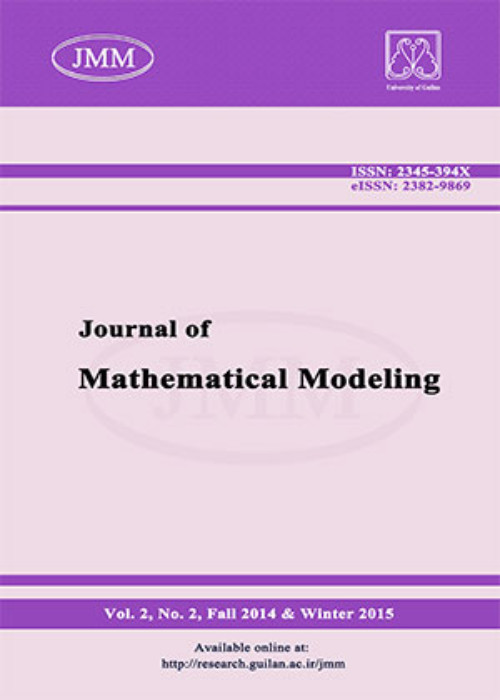فهرست مطالب
Journal of Mathematical Modeling
Volume:8 Issue: 1, Winter 2020
- تاریخ انتشار: 1398/12/11
- تعداد عناوین: 6
-
Pages 1-20Quasi-Newton methods are one of the popular iterative schemes to solve unconstrained optimization problems. The high convergence rate and excellent precision are two prominent characteristics of the quasi-Newton methods. In this paper, according to the preferable properties of a modified secant condition, a modified conjugate gradient method is introduced. The new algorithm satisfies the sufficient descent property independent of the line search. The convergence properties of the proposed algorithm are investigated both for uniformly convex and general functions. Numerical experiments show the superiority of the proposed method.Keywords: Conjugate gradient methods, Modified secant condition, Sufficient descent condition, Global convergence
-
Pages 21-39Here, three new nonlinear conjugate gradient (NCG) methods are proposed, based on a modified secant equation introduced in (IMA. J. Num. Anal. 11 (1991) 325-332) and optimal Dai-Liao (DL) parameters (Appl. Math. Optim. 43 (2001) 87-101). Firstly, an extended conjugacy condition is obtained, which leads to a new DL parameter. Next, to set this parameter, we use three approaches such that the search directions be close to some descent or quasi-newton directions. Global convergence of the proposed methods for uniformly convex functions and general functions is proved. Numerical experiments are done on a set of test functions of the CUTEr collection and the results of these NCGs are compared with some well-known methods.Keywords: Unconstrained optimization, Modified secant equations, Dai-Liao conjugate gradient method
-
Pages 41-54In this paper, we introduce a new dynamic model for the air traffic flow prediction to estimate the traffic distribution for given airspaces in the future. Based on Lighthill-Whitham-Richards traffic flow model and the Newton's second law, we establish a nonlinear model to describe interrelationship and influential factors of the three characteristic parameters as traffic flow, density, and velocity. The upwind scheme is applied to perform the numerical simulations. Numerical results show that the proposed model can reproduce the evolution of shockwave, rarefaction wave, and small perturbation.Keywords: Air traffic flow, macroscopic model, LWR model, Newton's second law, upwind scheme
-
Pages 55-70In this work, an initial value problem for a weakly coupled system of two singularly perturbed ordinary differential equations with discontinuous source term is considered. In general, the system does not obey the standard maximum principle. The solution to the system has initial and interior layers that overlap and interact. To analyze the behavior of these layers, piecewise-uniform Shishkin meshes and graded Bakhvalov meshes are constructed. A backward finite difference scheme is considered on the meshes and is proved to be uniformly convergent in the maximum norm. Numerical experiments for both the Shishkin and Bakhvalov meshes are provided in support of the theory.Keywords: Singular perturbation, parameter-uniform convergence, backward difference scheme, Shishkin mesh, Bakhvalov mesh, initial, interior layers
-
Pages 71-90We consider the evolution of the free boundary separating two immiscible viscous fluids with different constant densities in an elastic porous skeleton. The motion of the liquids is described by the Stokes equations driven by the input pressure and the force of gravity. For flows in a bounded domain, we emphasize the study of the properties of the moving boundary separating the two fluids.Keywords: Hydrodynamic modeling, fluid flows, fluid-structure interaction
-
Pages 91-104We use the cellular automaton (CA) approach to model binary diffusion in solids. We define an asynchronous CA model and formally take its continuum limit and show it approaches a differential equation model derived in previous work (Ribera, Wetton, and Myers, 2019, arXiv:1911.07359 [cond-mat.stat-mech]) that exhibits the Kirkendall effect. The framework allows the exploration of other state change rules based on additional physical mechanisms.Keywords: Kirkendall effect, Diffusion, Hollow nanostructures, Cellular automaton


